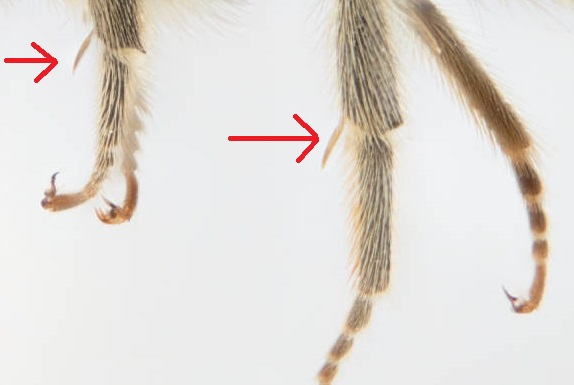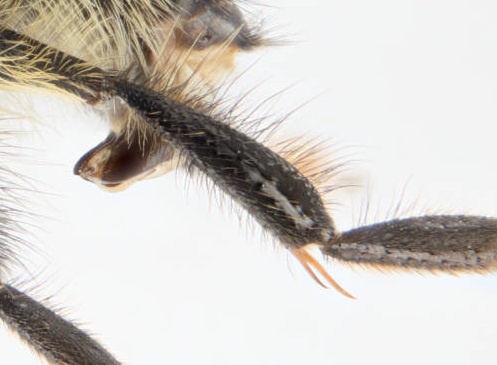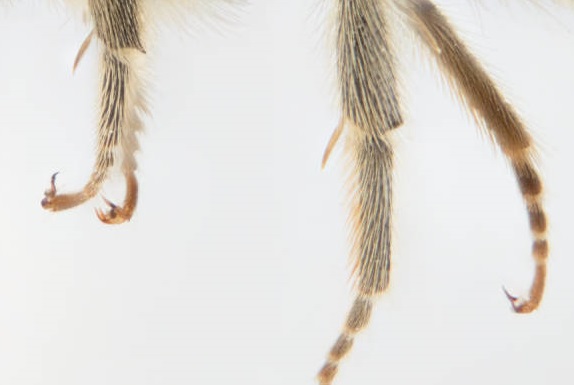Functions
Break Down – Physically Break Down – Non-Living Materials
One way to help classify a bee taxonomically is to investigate the tibial spurs. The tibial spurs stick out from where the tibia meets the basitarsus and can be found on any of the legs, though are most commonly on the hind and midlegs. They’re movable and multiple spurs can be found on the same leg. Small, immovable spikes called tibial spines eject from the spurs.1
Tibial spurs are used mainly to dig nests into substrate and they vary according to what material the bees use for nesting substrate. European honeybees (Apis mellifera) don’t have tibial spurs because they build wax combs and have no need to dig.

The midleg and hind leg tibial spurs of Andrena amphibola, from the University of Calgary Invertebrate Collection. The genus Andrena is commonly known as a mining bee, making their home in sandy soils.

The hind leg tibial spurs of Bombus centralis from the University of Calgary Invertebrate Collection. Bombus are more commonly known as bumblebees, which are often found at colder climates than other bees with harder substrates.2
This page was created by Holly Kerstiens in collaboration with Dr. Mindi Summers, Dr. Marjan Eggermont, Dr. Jess Vickruck, Lincoln Best and Dr. Alex Ralevski as part of an independent studies project in winter 2019. This information is also available as a collection on AskNature.org.
Sources
1 The Bees of the World
Hopkins Fulfillment Service. 2007.
Michener, C.D.
2 Bombus
Natural History Museum. Retrieved February, 2019.
http://www.nhm.ac.uk/research-curation/research/projects/bombus/introduction.html
